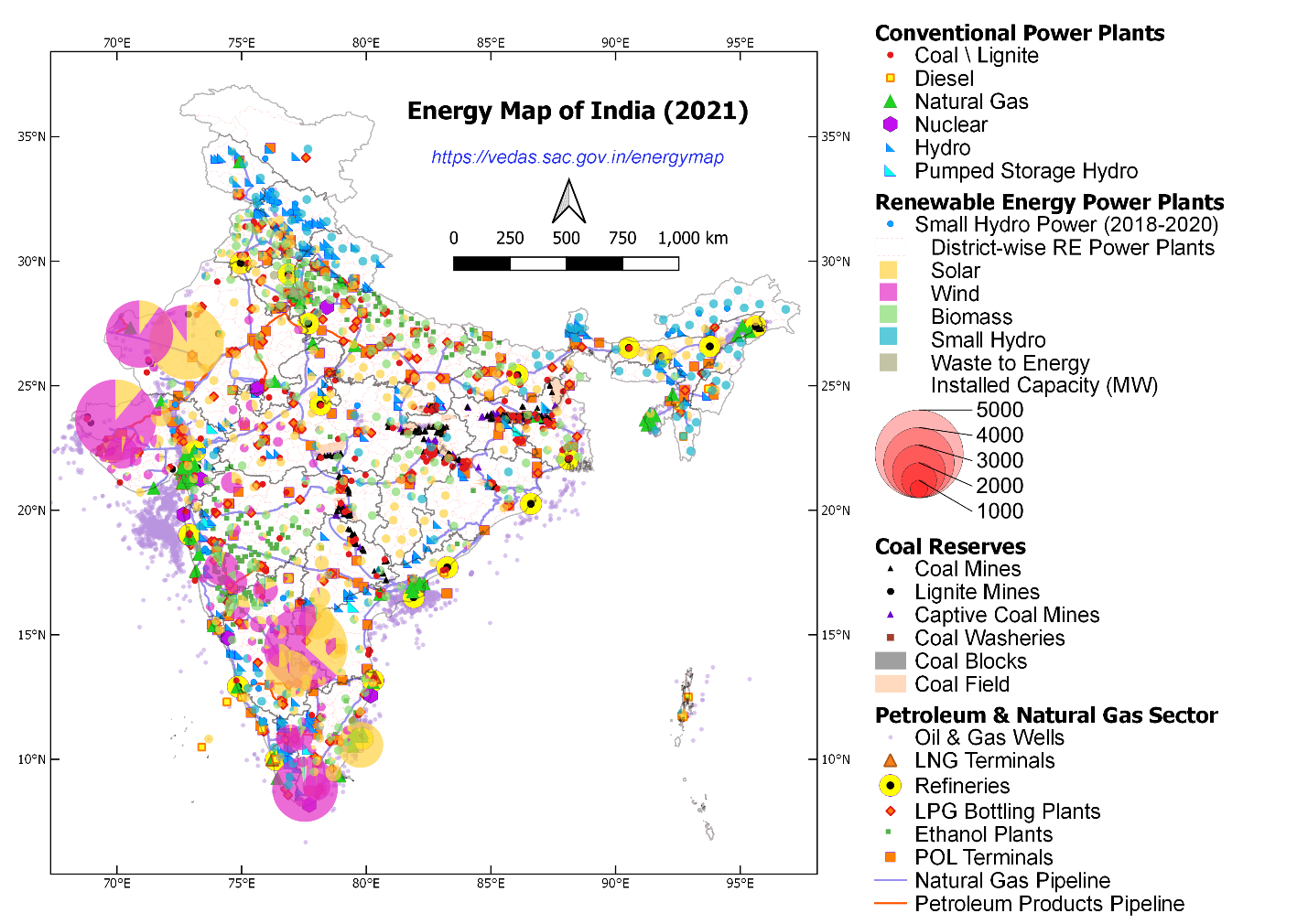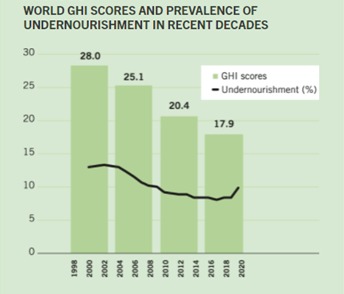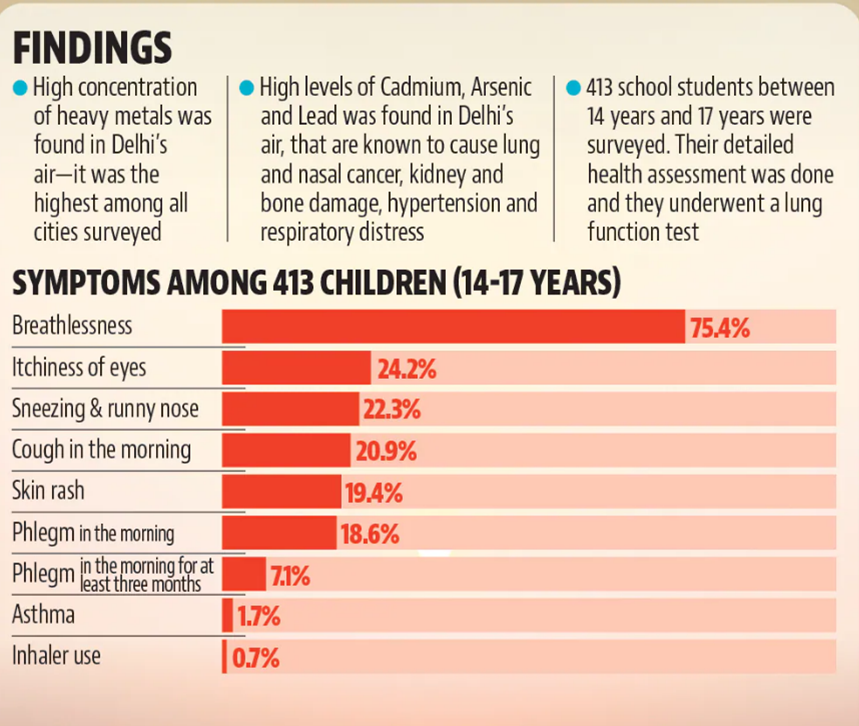Thursday, 21st October 2021
Global Food Security index 2021
In News
India has been ranked at the 71st position in the Global Food Security (GFS) Index 2021 of 113 countries
Highlights of the report
- Edition: The 2021 GFSI is the tenth edition of the index. Ireland topped the chart whereas Burundi bagged 113rd rank.
- Overall status: The index shows that, while countries have made significant strides toward addressing food insecurity in the past ten years, food systems remain vulnerable to economic, climatic, and geopolitical shocks.
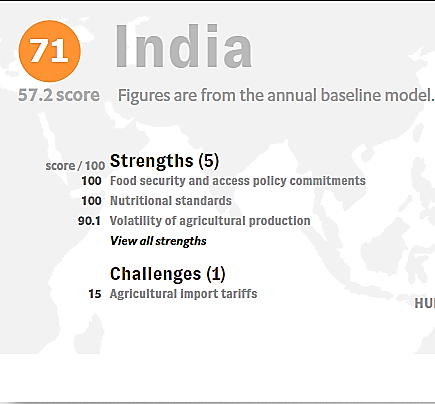
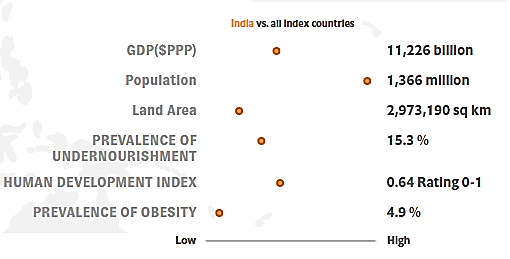
-
- Action is imperative at all levels–local, national, and global–to end hunger and malnourishment and ensure food security for all.
- India’s rank: India is ranked at 71st position in the Global Food Security (GFS) Index 2021 of 113 countries, but lags behind its neighbours Pakistan and Sri Lanka in terms food affordability.
- India’s overall position is better than its neighbours Pakistan (75th rank), Sri Lanka (77th rank), Nepal (79th rank).
- Score Improvement: India’s score improved only by 2.7 points to 57.2 in 2021 from 54.5 in 2012.
- Decreasing food security: The global food security has decreased for the second year in a row after seven years of progress towards the Sustainable Development Goal of achieving zero hunger by 2030.
- Future Action: Index shows that to meet these present and emerging future challenges requires that investments in food security are sustained – from innovation in climate-resilient crop yields to investing in programs to assist the most vulnerable.
About the Global Food Security Index
- About: The Index considers the issues of food affordability, availability, quality and safety, and natural resources and resilience across a set of 113 countries.
- The GFSI looks beyond hunger to identify the underlying factors affecting food insecurity around the world.
- Indicators: The index consists of 58 unique indicators that measure the drivers of food security across both developing and developed countries.
- The Organizations involved: The GFS Index was designed and constructed by London-based Economist Impact and is sponsored by Corteva Agriscience.
- The 2021 edition: This edition of the GFSI incorporates the "Natural Resources and Resilience" category into the main index.
- This category assesses a country’s exposure to the impacts of a changing climate
- This category was first introduced into the GFSI in 2017 as an adjustment factor
- Given its increasing importance, has been mainstreamed for the first time this year.

Sources:
Renewable Energy Investment Attractiveness Index
In News
India has retained the third rank in the 58th edition of ‘Renewable Energy Country Attractiveness Index’ (RECAI).
Highlights of the Index
- New PPA Index: A new power purchase agreements (PPAs) Index has been introduced in this edition of RECAI. It focuses on the attractiveness of renewable power procurement and ranks the growth potential of a nation’s corporate PPA market. India has been ranked 6th among the top 30 PPA markets.

-
- A power purchase agreement (PPA) is a contractual agreement between energy buyers and sellers. They come together and agree to buy and sell an amount of energy which is or will be generated by a renewable asset. PPAs are usually signed for a long-term period between 10-20 years.
- India’s Inclusive and Holistic Policy Approach: India’s thriving renewable energy market conditions, inclusive policy decisions, investment and technology improvements that focus on self-reliant supply chains have pushed the country’s clean energy transition to new heights.
- In 2021, India witnessed a watershed moment in combatting the climate crisis during which the total installed renewable energy capacity (excluding large hydro) crossed the milestone of 100 GW.
- Bottlenecks and Challenges: The report noted that the drive to integrate increasing volumes of
variable resources would put grid infrastructure under significant strain, and that the investment required to upgrade and expand energy transmission infrastructure across the globe will be a key challenge.
- Top Rankers: The US, mainland China and India have continued to retain the top three rankings and Indonesia has become a new entrant to the RECAI.
Renewable Energy Country Attractiveness Index’ (RECAI)
- RECAI is a biannual index released by the consultancy firm EY since 2003.
- It ranks the world’s top 40 markets on the attractiveness of their renewable energy investment and deployment opportunities.
- With companies and investors focusing on environment, social and governance (ESG) measures, RECAI underlines the importance of corporate power purchase agreements (PPAs) as a key driver of clean energy growth.
Sources:
- India retains 3rd position in renewable energy investment attractiveness index
- India retains 3rd rank in RE Country Attractiveness Index
- Renewable Energy Country Attractiveness Index’ (RECAI)
- India retains 3rd position in EY Renewable Energy Attractiveness Index
Image Sources:
The Nihang Sikhs
In News
The Nihangs Sikhs have come into spotlight due to the murder of a man at the farmers’ protest site on Delhi border.
About the News
- A group of Nihangs has claimed responsibility for the brutal murder of a 35-year-old man at the Singhu border farmers’ protest site, allegedly because he had disrespected the Sikh holy book.
- The execution was cruel and looked like a warning to others against the sacrilege of their sacred book, the Sarab Loh Granth.

Who is a Nihang Sikh?
- About: Nihang is an order of Sikh warriors, characterised by blue robes, antiquated arms such as swords and spears, and decorated turbans surmounted by steel quoits.
- Origins: The order can be traced back to the creation of the Khalsa by Guru Gobind Singh in 1699, according to Sikh historian Dr Balwant Singh Dhillon.
- Nihang meaning: In Persian, Nihang means an alligator, sword and pen. But the characteristics of Nihangs seem to stem more from the Sanskrit word nihshank which means without fear, unblemished, pure, carefree and indifferent to worldly gains and comfort,”
- Classification: In the absence of a central command or leadership, they are loosely organised.There are about 14 major groups of Nihangs of which three are Buddha Dals (basically considered a faction of the elderly) and 11 are Taruna Dals (formed as a band of the young).
- Each Dal is headed by a ‘Jathedar’, who presides over a large number of gurdwaras.
How Nihang’s are different from other Sikhs & Sikh warriors?
- Code of Conduct: “Nihangs observe the Khalsa code of conduct in its strictest sense. They do not profess allegiance to any earthly master. Instead of saffron, they hoist a blue Nishan Sahib (flag) atop their shrines.
- Slogan: Nihangs use the slogans ‘chhardi kala’ (forever in high spirits) and ‘tiar bar tiar’ (state of ever-preparedness) for unforeseen events.
Nihang’s Occupation
- Major Nihang factions have under their control a number of gurdwaras, where devotees make offerings.
- They are stationed at their deras all year round, but set out on an annual pilgrimage of Anandpur Sahib, Damdama Sahib, Talwandi Sabo, and Amritsar, and take part in religious events and exhibit their martial skills and horsemanship.
What is Nihang Sikhs’ role in history?
- Nihangs played a major role in defending the Sikh panth against attacks and persecution by Mughal governors in the early decades of the 18th century, and then during the invasions of the Afghan Ahmad Shah Durrani between 1748 and 1767.
- When the Khalsa army was divided into five battalions in 1734, a Nihang or Akali battalion was led by Baba Deep Singh Shahid.
Sources:
Coal Crisis in India
In News
India could be on the verge of a power crisis as the stock of coal held by the country’s thermal power plants has hit critically low levels.
About the News
- More than half of India’s 135 coal-based power plants, which satisfy 70% of the country’s energy needs, had just four days of coal left at the end of September – down from 13 days at the beginning of August, according to official data.
- Regulations mandate that 22 days of stock be kept at thermal plants.
- The current coal crisis comes amid a broader energy crisis across the world with the prices of natural gas, coal and oil rising sharply in the international market.
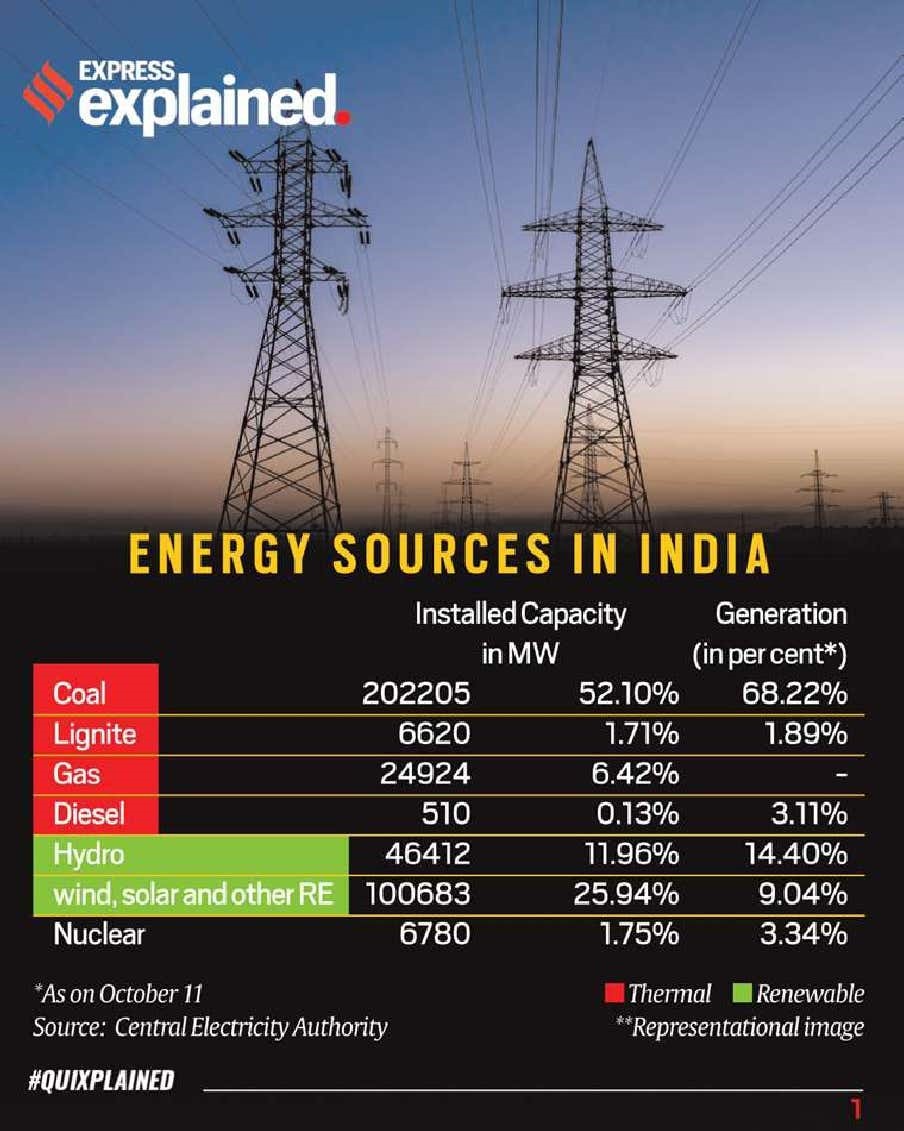
Immediate Steps taken by government to handle the crisis
- An inter-ministerial team is monitoring the supply of coal to thermal power plants.
- Thermal plants with captive coal mines to boost their coal output.
- Prioritising coal supplies for thermal power plants with low levels of stock.
- Increase the supply of coal by expediting the start of production from a number of mines that already have all requisite clearances in place.
- The government has also boosted the number of rakes of coal being transported to thermal power plants daily.
What were the immediate causes of this crisis?
- China’s Voracious Demand: The cost of coal worldwide has soared, triggered by China’s huge energy demand – and its spat with major supplier Australia has pinched supply in the world’s second biggest economy even more.
- China began boosting coal imports from countries in Southeast Asia such as Indonesia, one of India’s leading suppliers, and others in South Asia, which led to the increase in global prices.
- Exporter Price Rises: Major exporters’ benchmark thermal coal prices have scaled all-time highs recently – more than doubling to $200 a tonne since the start of the year – with Australia’s Newcastle prices rising roughly 50% and Indonesian export prices up 30% in the last three months.
- Floods and Poor Planning: The current crisis is not manifested by a shortage of coal mining capacity but instead it is caused due to improper foresight, planning and stocking by power generators and the energy regulator in the country – along with other factors such as lower production due to rains.
- Domestic Demand Jump: An unexpected sharp post-pandemic rebound of the Indian economy also led to a spike in power demand. The demand in August was for 124.8 billion units, according to India Ratings and Research, a jump of 17% from the year ending that month.
- Shortage Warnings Ignored: Poor planning by power producers who did not look at stocking up despite Coal India’s warnings in February. Yet power plants hesitated to stock up fearing that the third Covid wave expected in September or October could again tank demand.
- Renewables Rollout Slowed: Renewable energy installation also slowed down in the past year due to the pandemic. While India had an installation target of 175 gigawatts (GW) of green energy by 2022 and 450GW by 2030, only 7GW of was added in FY 2020/21.
But it has been a brewing Crisis: Not a new phenomenon
The shortage of coal is not a crisis that is new to the Indian economy. In fact, it has been a regular feature in recent years with the country faced a shortage of coal in both 2018 and 2014.
- Deb Burden and dampened investments: In FY19 the revenues of distribution companies covered only about 70% of their total costs. This has discouraged private investment in power generation and distribution.
- It has also increased the debt burden on public sector distribution companies as they have not been compensated for the losses they incur while selling power at subsidised rates.
- Mining Monopoly: It should also be noted that the mining of raw materials such as coal is nearly monopolised by public sector companies like CIL that are not run primarily for profits. In fact, CIL has kept the price of its coal low even as international prices have risen significantly.
- Operational Issues: Issue of logistics especially railway and the lack of a dedicated freight corridor are also the reason behind the shortage of coals plants in some states – especially those who don’t have any coal mining within their territory and depend on mines in other states.
- Import Substitution: According to the central government, the increased pressure on domestic coal is also due to a dip in the import of coal due to factors such as “import substitution and rising prices of imported coal.”

What can be done to avert such a crisis in the future?
Some Issues that need immediate attention are: Closer coordination between CIL and other stakeholders, Mechanism to ascertain maintenance of necessary stock of coal by power plants and Effective coal supply management issues with regard to surplus coal with private sector entities that have captive mines.
Some long term measures can be:
- Expansion plans of CIL: It should be facilitated by the government by allowing the organisation to plough back its accumulated reserves and profits for such expansion.
- Mining Rebound: CIL is seeking to increase daily coal supply to 1.9 million tons by mid-October from about 1.7 million tons currently, an increase that would go a long way to help ease the deficit. Government could move to divert supplies away from industrial users -- like aluminium and cement makers -- to prioritize power generation.
- Supply Controls: Rationing domestic power supplies, especially in rural and semi-urban areas, may emerge as one of India’s easiest solutions. Indian power distributors do typically cut supplies to certain areas on a rotational basis when generation is lower than demand. However, doing so would risk jeopardizing the country’s fragile economic recovery.
- Price Incentive: Soaring power prices could potentially make it viable for some coastal plants to use high-cost imported coal, easing some of the burden on domestic miners.
- Surplus sale: New guidelines are being drafted to allow generation companies to sell surplus electricity on the exchanges, in part to spur idled plants back into action.
- Fuller Dams: The same monsoon rains that have flooded coal mines are likely to boost hydro-power generation. Large hydro-electric projects on dams are India’s major electricity source after coal and the sector performs at its peak around the rainy season which typically extends from June to October.
- Turn to Gas: There could be a larger role for natural gas to play, even with global prices currently surging. India has almost 25 gigawatts of gas-based generation capacity, though nearly 80% of that capacity remains unused because of high prices of the gas fuel.
Question: Discuss the reasons for the current coal crisis in India. What could be done to avert this crisis in future?
Sources:
- Explained | What is the extent of India’s coal crisis?
- India’s ‘coal shortage’ could set stage for overhaul of laws
- Coal India, the fall guy for power crisis
- Explained: Why the coal shortage is choking thermal power plants
- The inside story of India’s coal and power crises
- Coal crisis leaves India with few options to avoid power crunch
- Six Reasons Behind India’s Coal Crisis
- Coal India has become the whipping boy in coal crisis but Modi govt can’t escape blame
This Day in History - National Police Commemoration Day
On October 21, 1959, when twenty Indian soldiers were attacked by Chinese troops in Ladakh due to arguments between the troops, ten Indian policemen lost their lives and seven were imprisoned. After a month, on November 28, 1959, Chinese troops handed over the dead bodies of the martyred policemen and, since that day, October 21 has been observed as Police Commemoration Day in honour of the martyrs every year. It is observed to salute the spirits of police forces and their families and brave police martyred who lost their lives fighting for the country. It is celebrated to motivate and pay respect to the police personnel who perform their duties with the utmost diligence.

Source:
Image of the Day - Four-Legged Swarm Robots
This is image of Four-Legged Swarm Robots Built Using 3D Printer. Each robot is equipped with a lithium polymer battery, microcontroller and three sensors that enable them to connect to one another. The multi-legged robot is capable of manoeuvring in challenging environments and accomplishing difficult tasks collectively, mimicking their natural-world counterparts. These robots can navigate the challenging environments such as rough terrain and tight spaces, and use limbs to offer effective body support, enable rapid manoeuvrability and facilitate obstacle crossing.
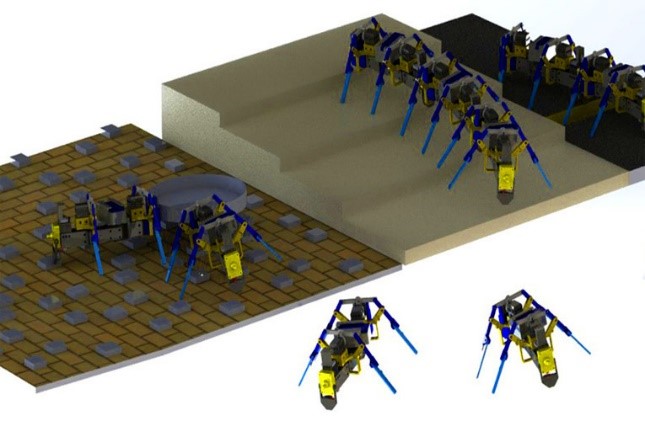
Source:
Stagflation - Edukemy Current Affairs
- Context: The RBI has cautioned that premature tightening of the monetary policy could result in stagflation.
- Stagflation is an economic condition when stagnant economic growth, high unemployment, and high inflation combine together (inflation + stagnant growth = stagflation).
- The rising inflation leads to a drop in the currency's purchasing powere. only fewer items can be bought for the same money.
- The situation worsens when rising inflation is accompanied by a stagnant output. As economic growth halts, unemployment rises but existing incomes do not rise fast enough resulting in stagflation.
- It also occurs when a central bank creates money flow by printing more currency but puts supply on hold.
- Also, when conflicting expansionary and contractionary policies occur, it can slow growth while creating inflation, leading to stagflation.
- The term “stagflation” emerged during the 1973-1975 recession.

Sources:
Image Source:
Cambrian Patrol Exercise
- Context: The Indian Army has won a gold medal at the Cambrian Patrol Exercise held in the UK.
- The Cambrian Patrol Exercise is considered the ultimate test of human endurance and team spirit and is considered the “Olympics of military patrolling”.
- It is a continuous 48 hour- long- range international military patrol exercise carrying a heavy backpack, across the rough terrain and often rough weather of the Cambrian Mountains of mid-Wales.
- It aims to enhance the operational capability and is the most arduous exercise that tests the candidates’ leadership, field craft, discipline and both mental and physical robustness.
- It is an annual event organized and run by 160th infantry Brigade and Headquarters Wales, commonly known as 160 (Wales) Brigade.
- The 4/5 Gorkha Rifles (Frontier Force) represented the Indian Army at the drill and was lauded on its navigation skills, delivery of patrol orders and overall endurance for completing the patrol.

Sources:
New Minilateral
- Context: The first meeting of the foreign ministers of India, Israel, the UAE and the US was held recently.
- The meeting is being looked at as a possible “New Quad" that aims to establish an international forum for economic cooperation.
- It comes on the back of the momentum created by the Abraham Accords (series of treaties normalizing diplomatic relations between Israel, the UAE, Bahrain, Sudan, and Morocco, facilitated by the U.S.in 2020)
- The subjects identified for cooperation in the New Quad include increasing trade, enhancing cooperation in maritime security and global public health and joint infrastructure projects in transportation and technology.
- Expanding economic and political cooperation in the Middle East and Asia, including through trade, combating climate change, energy cooperation, and support for public health at the time of the covid-19 pandemic were also discussed.
- The new “Quad" will give India the flexibility to engage more freely with Israel and India’s partners in the Gulf region.
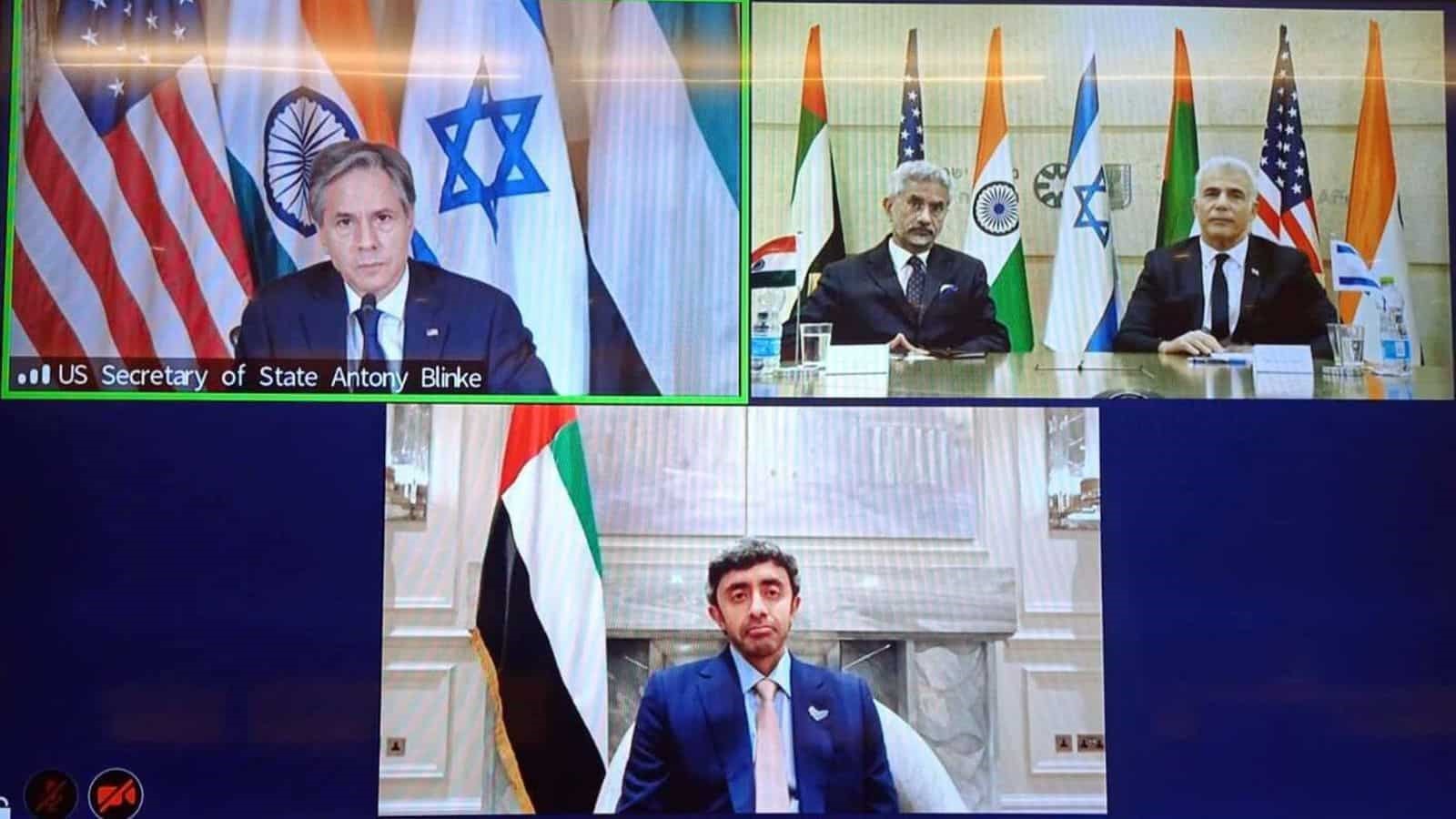
Sources:
Image Source:
'Rojgar Bazaar 2.0'
- Context: The Delhi government has issued tenders for developing a portal named Rojgar Bazaar 2.0.
- It is a digital platform being created by the Delhi government which will list available jobs to help people of the national capital.
- The site will provide artificial intelligence-based job matching and end-to-end employment related information to those looking for jobs in the city.
- In addition to AI-based smart-matching and employer verification, the platform will also provide a range of other services such as skilling, career guidance, skill credentialing and automated analytics services.
- The first version of the portal- Rojgaar Bazaar 1.0 - was launched by the Delhi government in 2020 and over 1 million jobs have already been advertised on the current website.

Sources:
- 'Rojgar Bazaar 2.0': Delhi govt floats tender for job seekers
- Rojgaar Bazaar 2.0: All you need to know about Delhi govt's jobs portal
Image Source:
When India’s foreign policy comes homes: HT
Essence: The author brings to attention that the foreign policy of any nation need not be separate from its internal/domestic policies. In the globalized world, an external decision impacts the country’s population and growth automatically. Issues related to terrorism, climate change, cybersecurity, corporate taxation are good examples that show intrinsic relationship defies the dichotomy of external-internal.
Since public interest gets related to external decision making as well, there must be increased impetus on foreign policy being sensitive to domestic requirements. “Local with the global” is one such initiative in India’s industry and service sector. Health, data protection, artificial intelligence are upcoming domains in which such associations must be made stronger than before.
Why you should read this article?
- To understand the interlinkage between domestic and foreign policy
- To focus on examples where foreign policy directly impacts India’s internal economy and society
Source:
Why India needs an international development cooperation agency: IE
Essence: The article highlights India’s pressing need to have a specialized agency for proficient delivery of outcomes in international cooperation. The need arises in the lieu of increasing India’s assistance to other developing countries. Efforts have been made in past to set up an agency but didn’t take a concrete shape due to which India missed first mover advantage. Out of the five modalities that India deploy in international cooperation, concessional financing forms the majority of it.
In order to make any major changes in the same India would need a specialized agency that can facilitate development partnerships between India and other countries. It is high time India restructures its development finance apparatus for deeper and effective engagement. It will help India address the rapidly evolving newer competitive development financing landscape.
Why you should read this article?
- To understand, why India needs a specialized agency in the area of international cooperation.
- To understand why India needs revision in the way it scredits line works
Source:
The outlines of a national security policy: TH
Essence: Gone are the days when countries with large geography, population and GDP had an advantage over others in case of national security. In cyberwarfare, deterrence power of large countries is gone because even a small country can cause severe damage to them. The author discusses skill sets required to ensure national security in such conditions.
The article talks about National security in the 21st century and how it will depend on skills in four dimensions. These dimensions include assets, identity of opponents, new departments for supporting several frontiers of innovation and technologies and so on. The agenda for the new strategy will be critical and emerging technologies, connectivity and infrastructure, cyber security and maritime security.
Why should you read this?
- To understand an emerging trend in national security to which India should be prepared.
- To understand, steps required to be taken.
Source:
Pollution to Solution: A breakthrough
Background
- Burning of agricultural waste is one of the biggest drivers of air pollution around the Delhi NCR region of India.
- A Delhi based firm Takachar, won the Earthshot Prize, for providing a solution to the Stubble burning issue
- The Earthshot Prize is considered as Eco Oscar for a breakthrough solution for solving ecological issues.
From Pollution to Solution Technology by Takachar
- It is a cheap, small- scale and portable technological tool that can be attached to tractors in farms.
- This tool converts crop residue into sellable profitable bio-products.
- It helps in reducing the smoke emission by up to 98%.
- Even the technology is used to create fuel, fertilisers and other speciality chemicals from agricultural waste.
- Aims to reduce air pollution along with creation of livelihood opportunities for the farmers.

Quote:
Sooner or later, we will have to recognise that the Earth has rights, too, to live without pollution. What mankind must know is that human beings cannot live without Mother Earth, but the planet can live without humans.- Evo Morales
Source:
Image Source:
Share the article
Get Latest Updates on Offers, Event dates, and free Mentorship sessions.

Get in touch with our Expert Academic Counsellors 👋
FAQs
UPSC Daily Current Affairs focuses on learning current events on a daily basis. An aspirant needs to study regular and updated information about current events, news, and relevant topics that are important for UPSC aspirants. It covers national and international affairs, government policies, socio-economic issues, science and technology advancements, and more.
UPSC Daily Current Affairs provides aspirants with a concise and comprehensive overview of the latest happenings and developments across various fields. It helps aspirants stay updated with current affairs and provides them with valuable insights and analysis, which are essential for answering questions in the UPSC examinations. It enhances their knowledge, analytical skills, and ability to connect current affairs with the UPSC syllabus.
UPSC Daily Current Affairs covers a wide range of topics, including politics, economics, science and technology, environment, social issues, governance, international relations, and more. It offers news summaries, in-depth analyses, editorials, opinion pieces, and relevant study materials. It also provides practice questions and quizzes to help aspirants test their understanding of current affairs.
Edukemy's UPSC Daily Current Affairs can be accessed through:
- UPSC Daily Current Affairs can be accessed through Current Affairs tab at the top of the Main Page of Edukemy.
- Edukemy Mobile app: The Daily Current Affairs can also be access through Edukemy Mobile App.
- Social media: Follow Edukemy’s official social media accounts or pages that provide UPSC Daily Current Affairs updates, including Facebook, Twitter, or Telegram channels.

